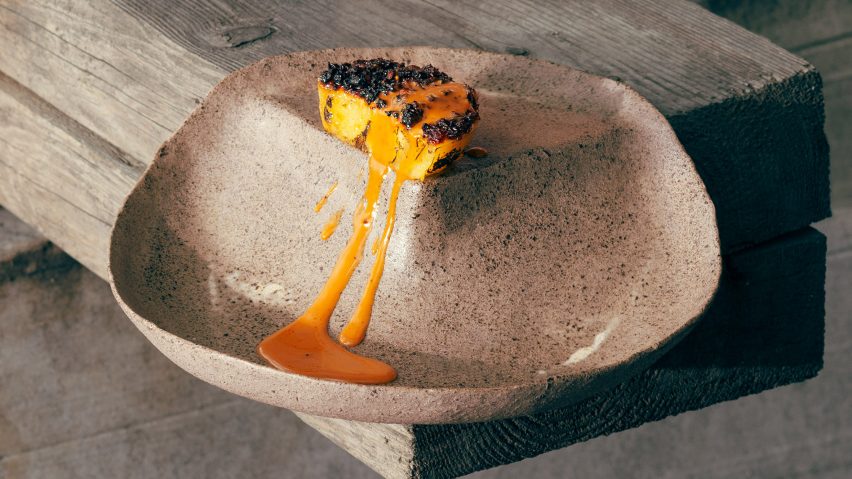
Experimental Gastronomy utensils make the eater engage with their food
Metal mittens, plates made from spoons and foraged clay bowls are among more than 500 pieces of cutlery and crockery created for the latest in a series of Experimental Gastronomy banquets.
Created by Dutch duo Martin Kullik and Jouw Wijnsma, the dining concept hopes to decelerate the eating process and help us engage with food in a new way.
To do so, the pair commissioned a series of designers, artists and craftspeople to create non-traditional tableware for a series of culinary occasions.
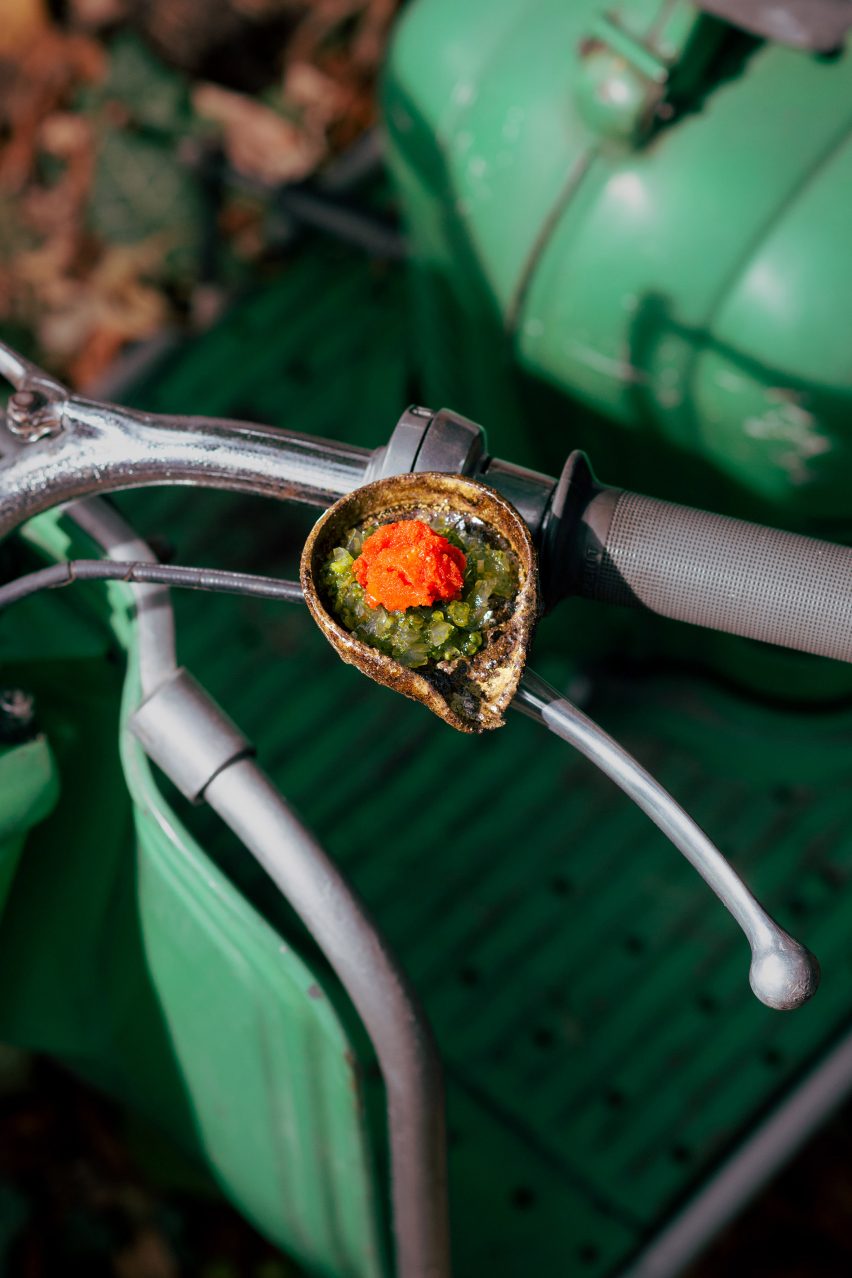
"The brief we always share with our artists is that we only want to work with natural, locally sourced materials that were either found, recycled, up-cycled or repurposed," Kullik told Dezeen.
For the latest dinner, which took place in Vienna on 5 and 6 October, 12 artists created bespoke tableware to accompany a nine-course tasting menu.
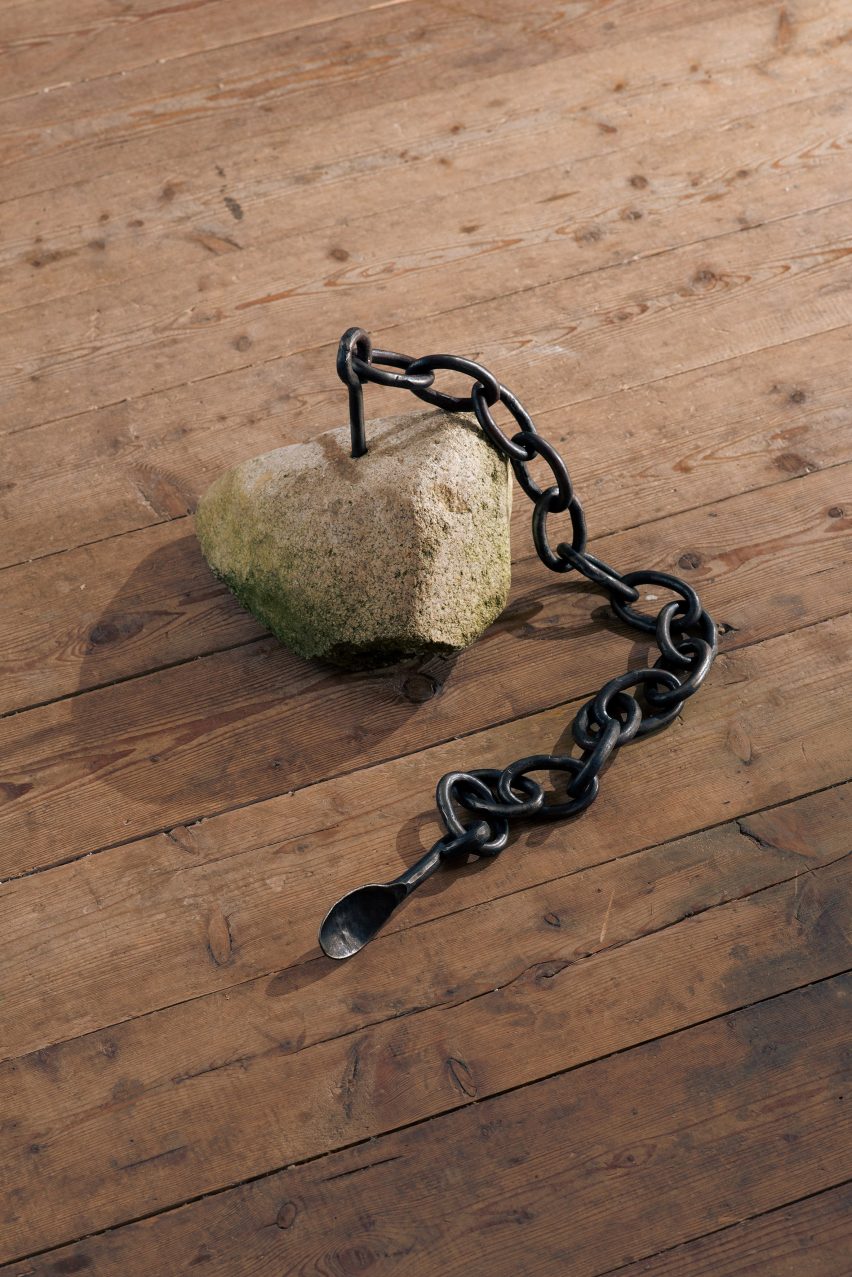
Designer and knife-maker David Wolkerstorfer ventured into unfamiliar territory by creating 72 different spoons from copper waste, old tools and wood.
Some were up to 1.5 metres long, inviting diners to feed their table-mates and creating a more social eating experience. Wolkerstorfer wanted to make people sit with their food for longer by using unexpected textures and materials.
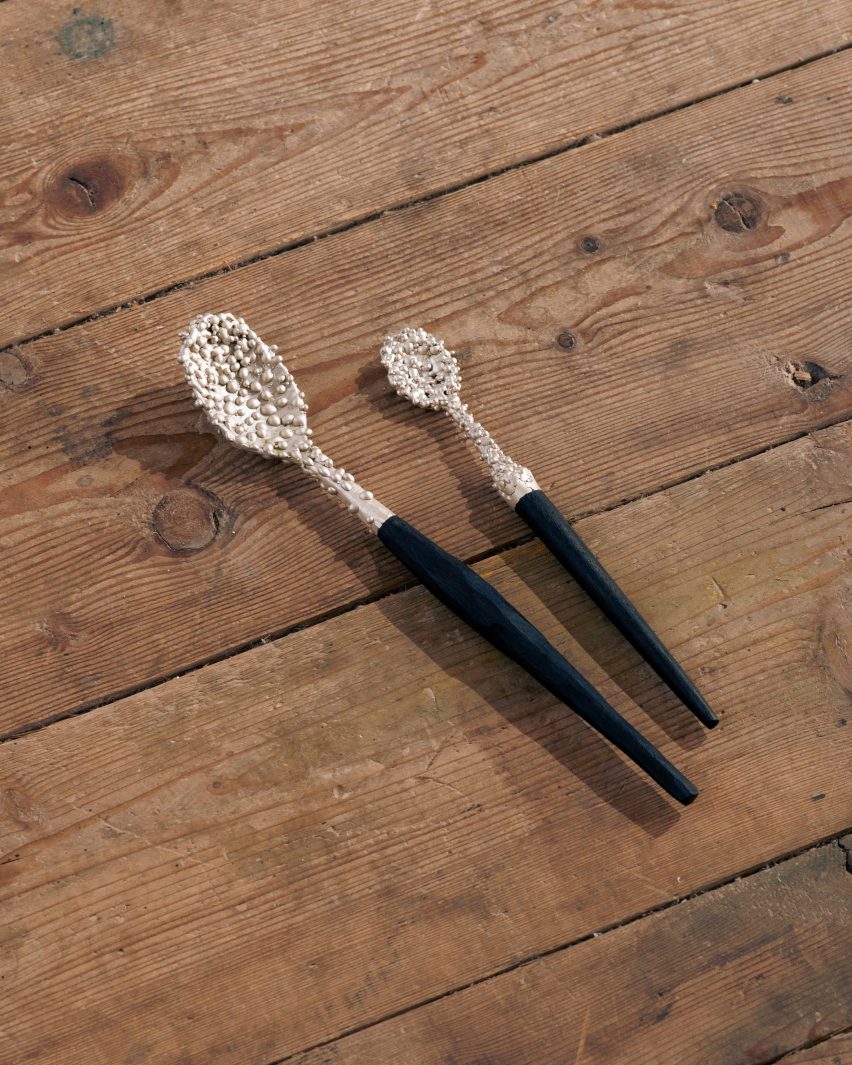
"It takes more time to eat with a heavy spoon," he explained. "And you will need even more time if it has a structured surface which makes it hard to get the food off."
"Nowadays most of our cutlery is made of stainless steel, but you will notice that the taste of food also depends on the material you eat it from," he continued. "So the same soup will taste different from iron, silver or golden spoons."
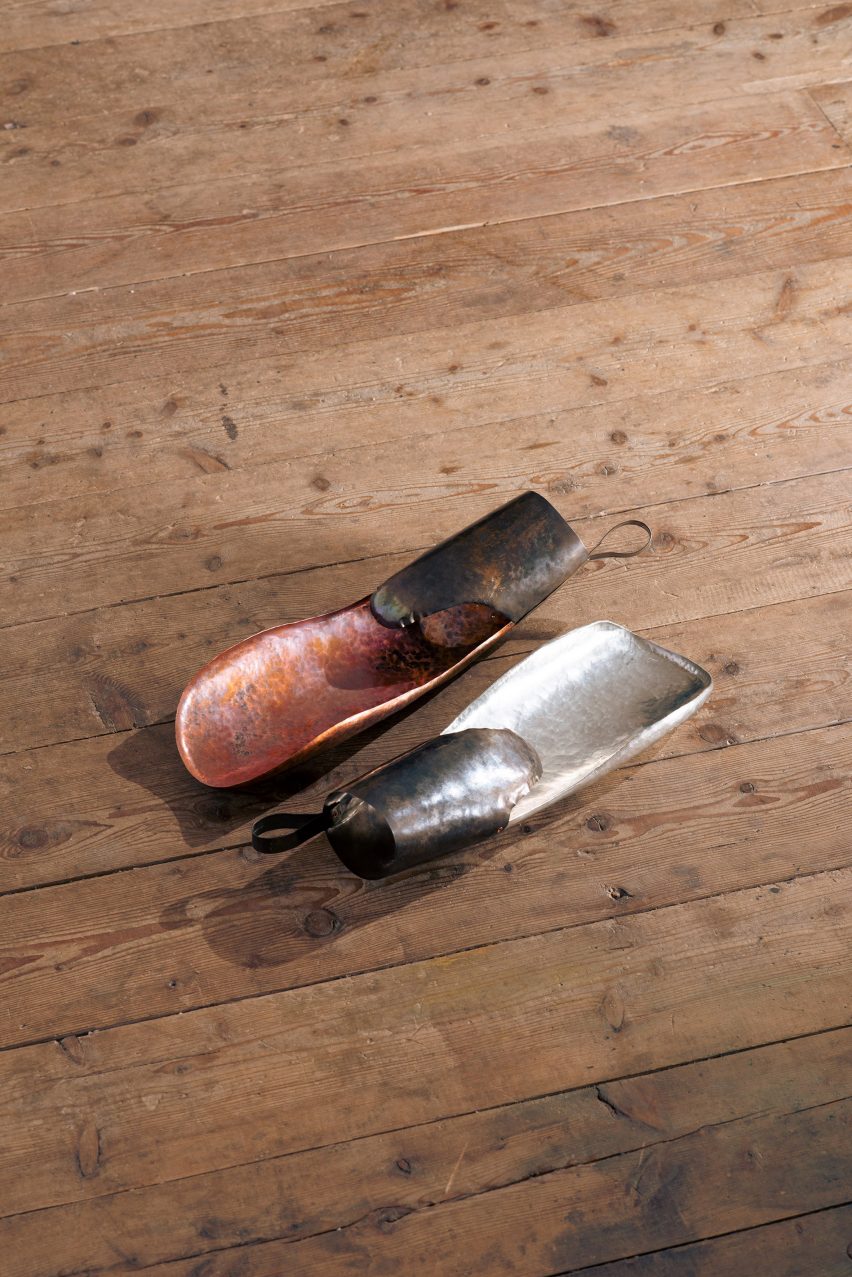
Drawing on the idea of hands as the original cutlery, Finnish jewellery designer Eija Mustonen created a series of three mittens in nickel silver, copper and pewter.
"They are something between jewellery, clothing and tools," said the designer. "I was educated as a silversmith 30 years ago, so with these pieces I want to honour that craft."
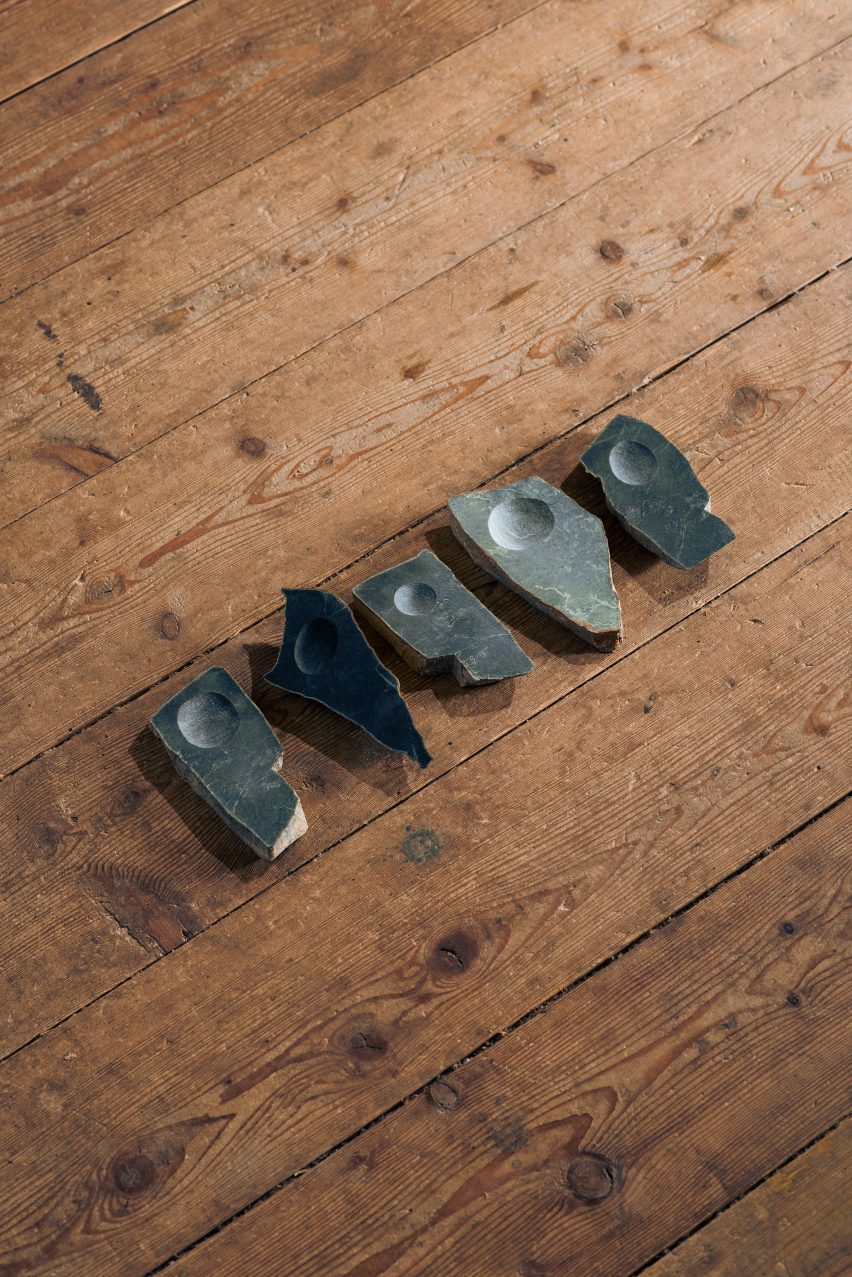
Other variations on the theme of spoons came from artist Jenni Sokura, who took inspiration from the natural shape of Finnish serpentine stone.
"I found myself admiring the little details inside the stone and it seemed almost impossible to grind the slices I had cut any further," she explained. "So they are more like ideas of spoons, given straight from nature."
"The shapes force you to move your hands in a slightly different way. Stone makes you more careful, as the material can seem fragile," she continued.
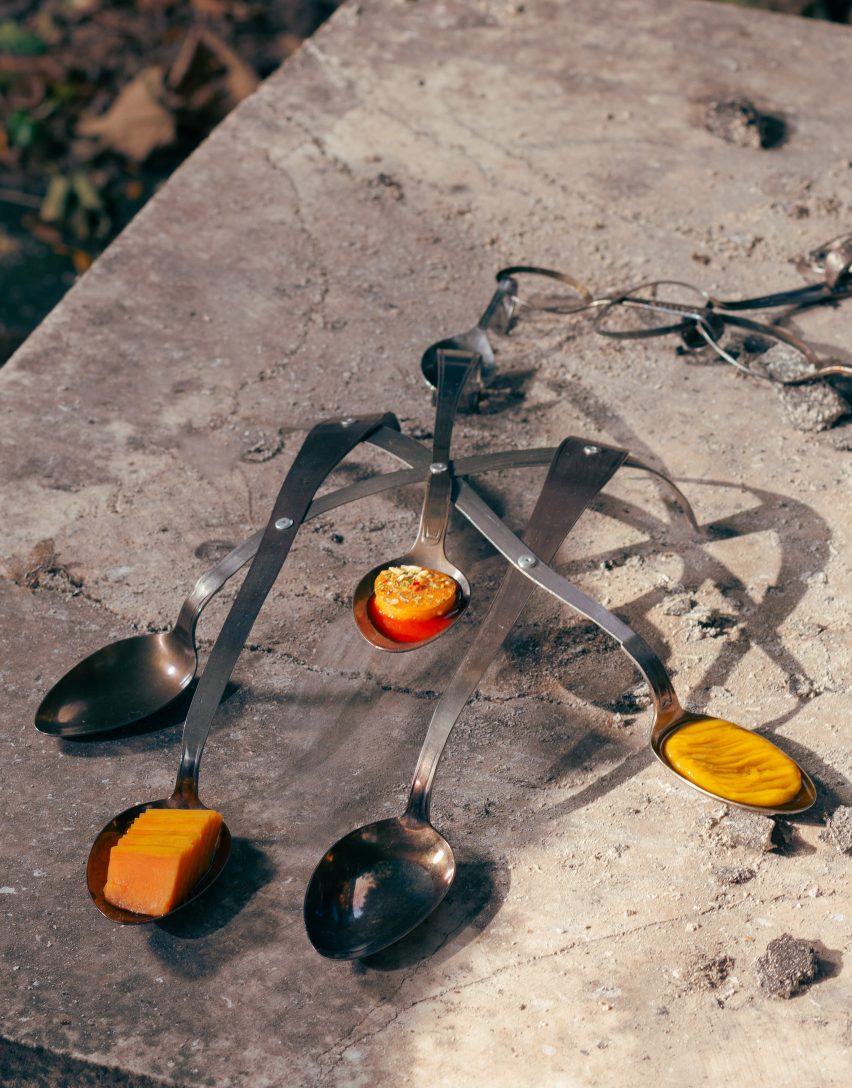
Considerate handling is also necessary to navigate Lisa Fält's creations, which consist of a series of spoons, connected into a branching network to form a kind of plate.
"Approximately 200 spoons were sent through a rolling mill," explained the designer. "After that I combined them into new forms and used two kinds of riveting to connect them."
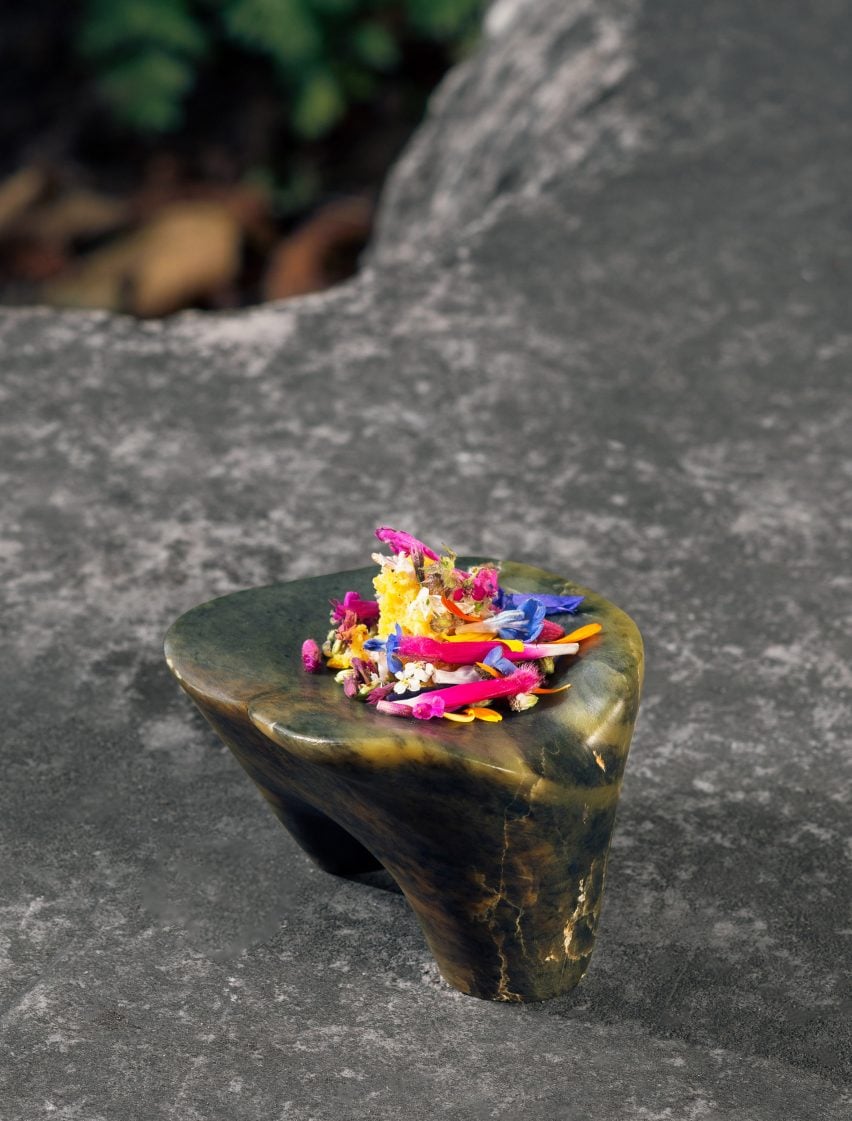
Other designers reinterpreted clay in new and unexpected ways to form bowls and plates.
Ceramicist Lillian Tørlen created a series of ADO's or "Annoyingly Dependent Objects" – irregularly shaped sharing plates, which need to be propped up by wooden blocks to stay upright.
"I think of functional dishware as a supportive structure of the meal, something to serve on and eat off," said Tørlen.
"So I wanted to make pieces that would themselves need supporting structures – other objects to prop them up. I wanted dishware that would make demands, and that unabashedly would be complicating the dining experience."
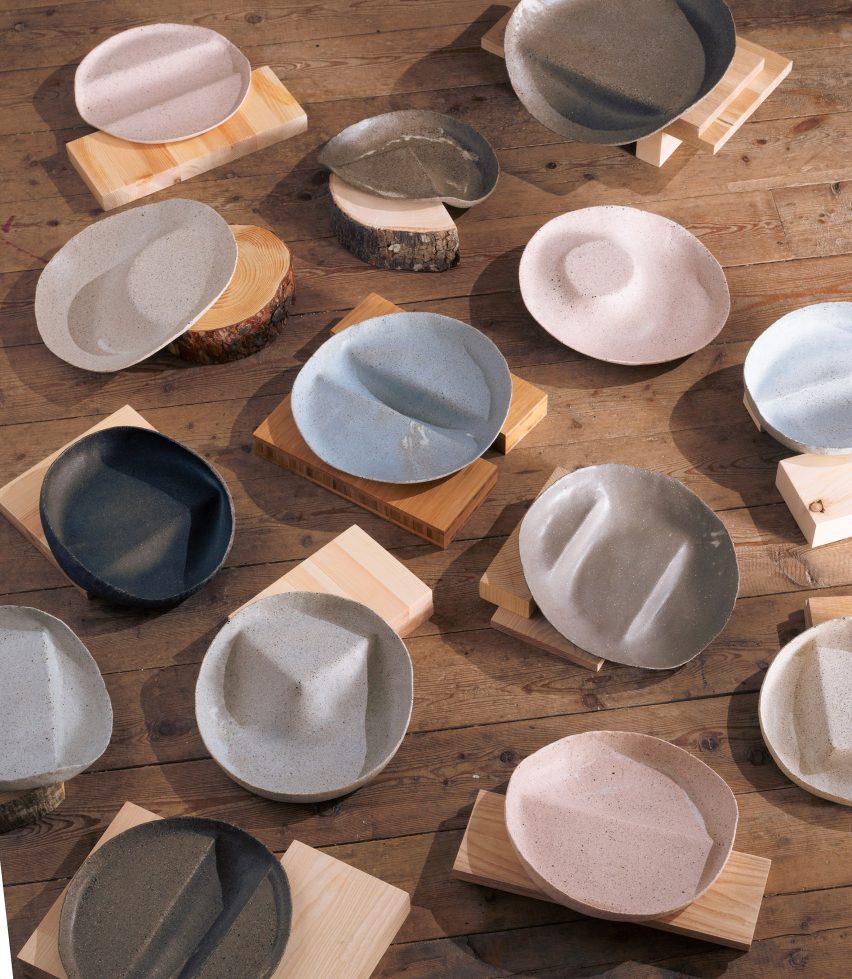
Where Tørlen looked at form, Austrian ceramicist Petra Lindenbauer focused on the sourcing of the material, creating 65 plates out of waste clay and glaze from her own workshop, mixed with ash from the kiln.
Vienna designer Gregor Titze, meanwhile foraged the clay from the local area: "I managed to get some clay from the underground of Vienna, as the city is developing a new subway line," said Titze.
"Most common tableware is smooth, flat and shiny. It's just an anonymous item between the table and the food. The rough surface of my objects should bring a more haptic perception into food consumption."
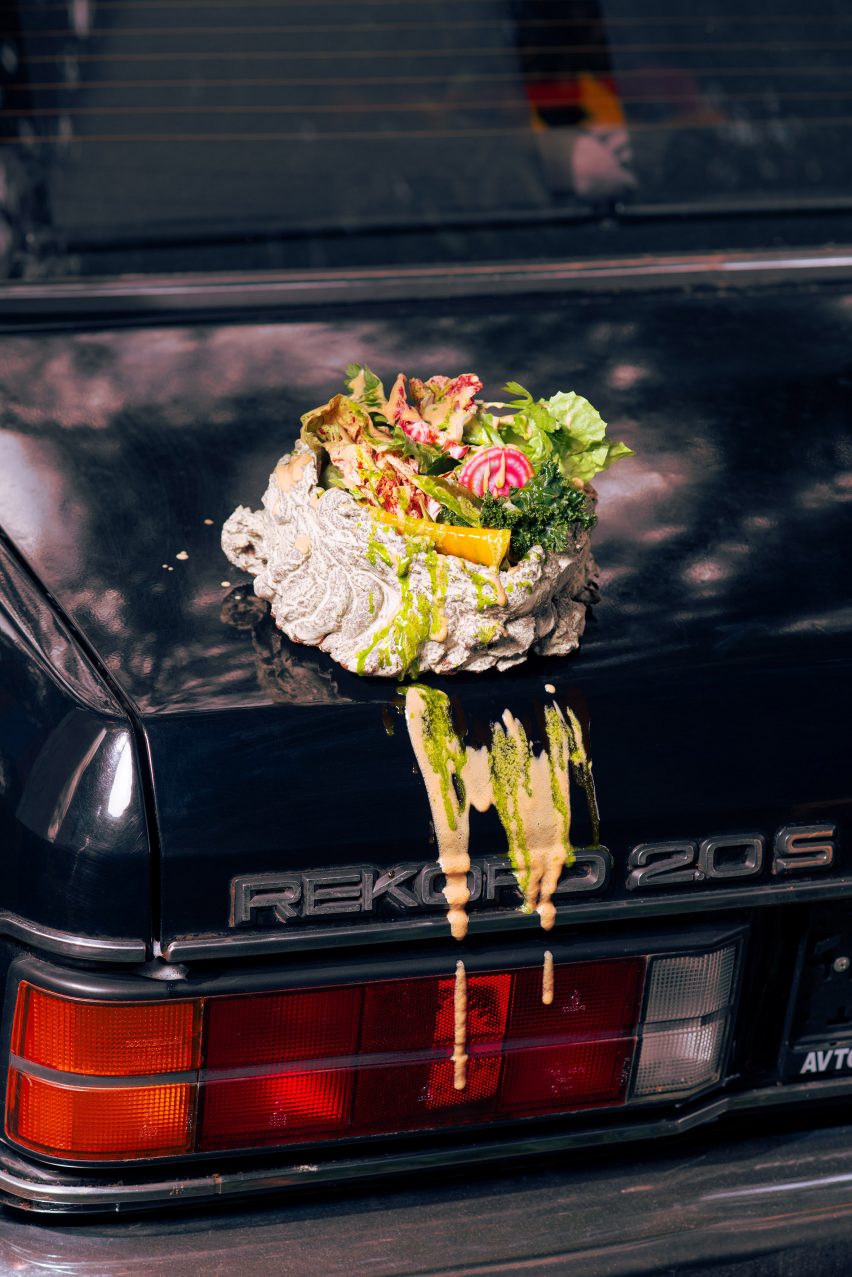
Other pieces created for the Vienna dinner include David Louveau's series of Japanese tea bowls, called chawans, and a variety of other clay surfaces by potter Erik Haugsby and Norwegian artist Sofie Nørsteng.
By making the tableware available to buy in the Jouw online shop, Experimental Gastronomy co-founder Martin Kullik hopes to bring its perception-altering qualities to the masses.
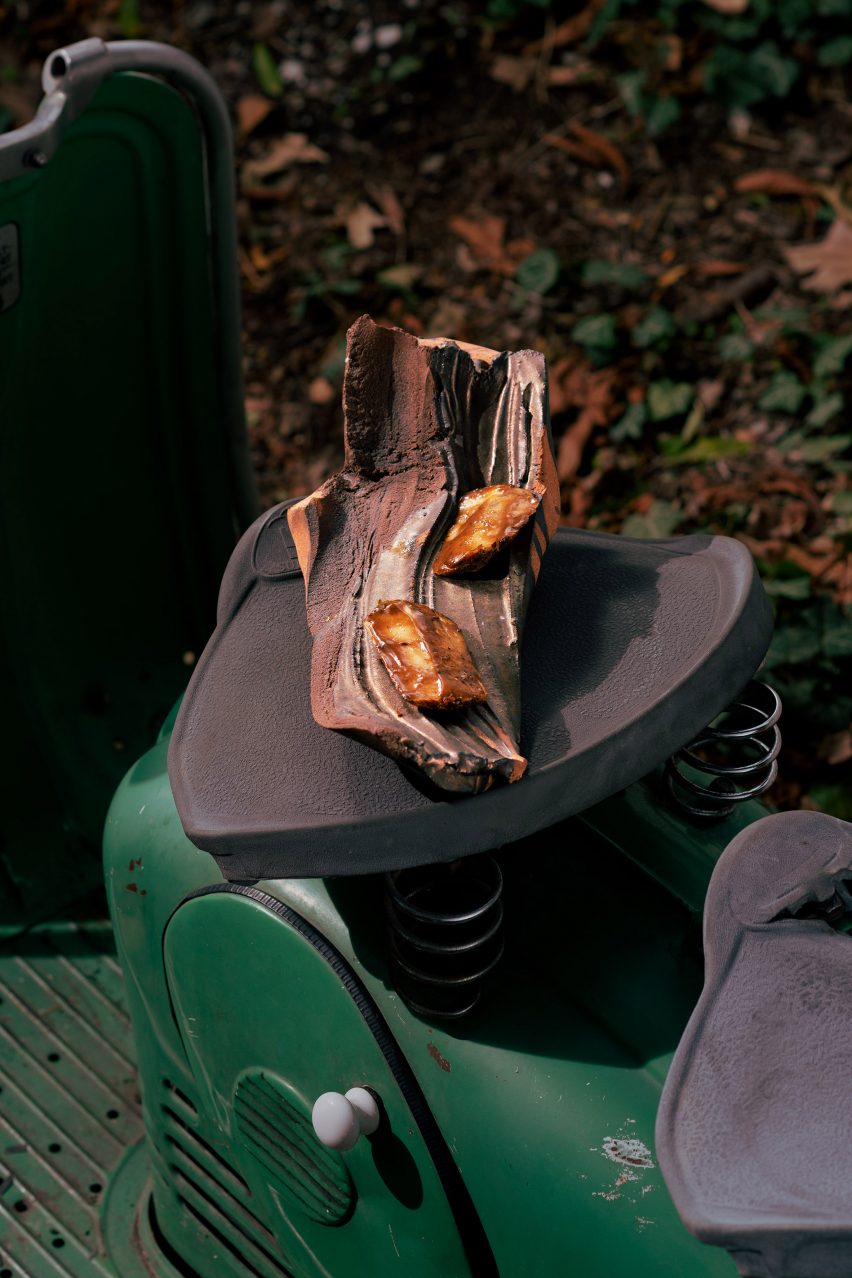
"Just think about the possibilities of what can happen when we start bending the norms and experimenting with the materials, sizes or textures of our eating tools," said Kullik.
"Understanding that changing the way we eat can have a direct impact on how we behave and think, is an interesting stimulus to step away from comfort and functionality."
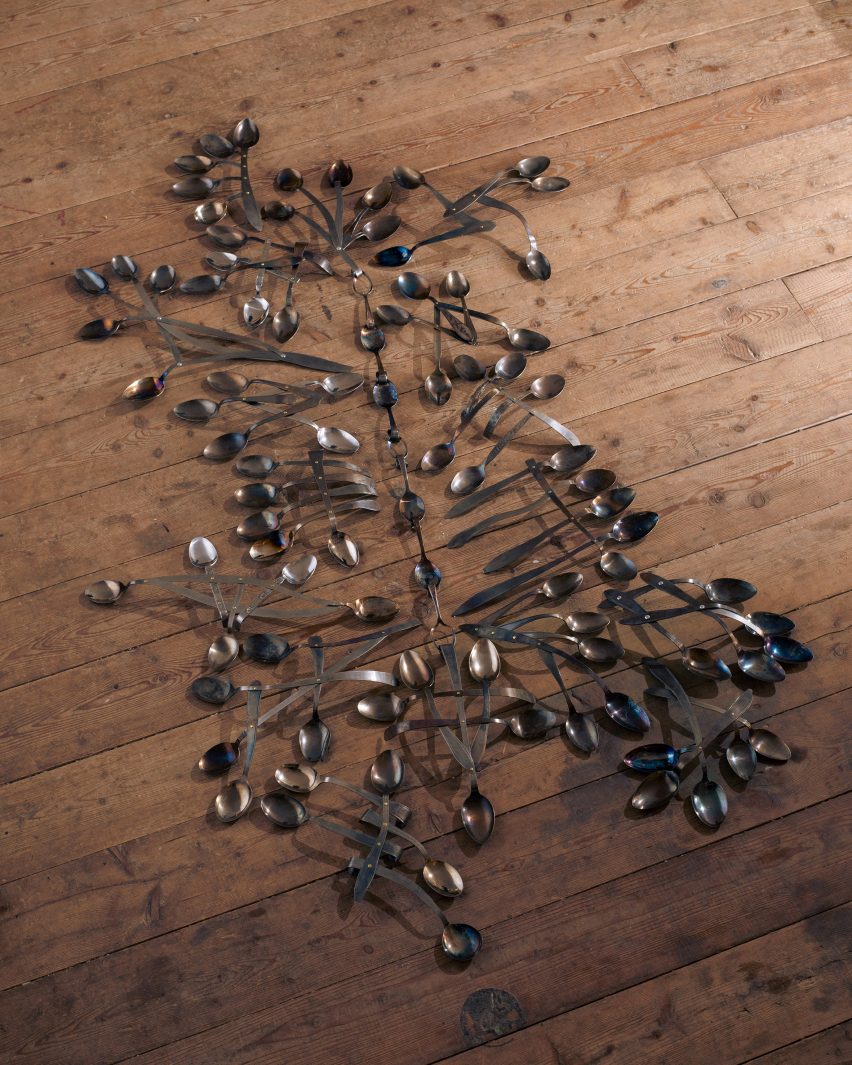
Indeed, research by the University of Oxford has proved that the taste of food is directly impacted by the size, shape, colour and weight of the cutlery we use to eat it.
One experiment found, for example, that diners thought their food tasted better and was worth 15 per cent more money when consumed with heavier utensils.
In this same spirit, previous creations for Experimental Gastronomy have included multi-ended spoons and forks, as well as oversized versions made from former Soviet Union tools.
Elsewhere, design studio Michel/Fabian has created Goûte, a spoon that is said to improve the flavour of food by recreating the experience of licking your fingers.